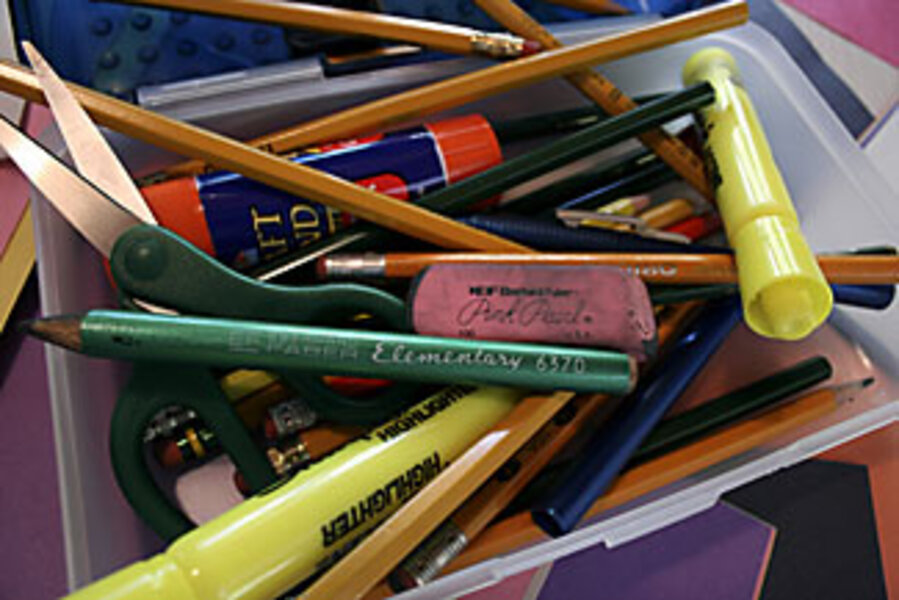Surprises on the school supplies list
Loading...
Years ago when I was in grade school, classes began the Tuesday after Labor Day. Mom would take me shopping after I arrived home from school the first day because teachers didn't give out supply lists in advance.
All of our purchases would fit easily into a small, handheld shopping basket: a half dozen No. 2 pencils with erasers, a separate pink eraser, a box of short colored pencils (used for maps in geography), a wooden ruler, a three-ring notebook (mine was a hard one covered with a blue weblike cloth), a sturdy cardboard pencil box, wide-lined notebook paper, white gummed reinforcers (licking required), a jar of white paste with a brush inside the lid, and a small box of crayons.
The list was pretty much the same until sixth grade, when a fountain (not ballpoint) pen was required.
The variety store where I shopped for school supplies has long been out of business. But on a recent August Saturday before classes began on Monday, Office Depot was crowded.
Parents wheeled shopping carts full of school supplies: highlighters, multicolored self-sticking reinforcers, vibrant backpacks unlike the unimaginative school satchels students carried long ago, organizational calendars, cellophane-wrapped packs of colored index cards, and a rainbow of Post-it notes. I gasped when I overheard the amount of one father's bill: $86.10.
When I got back home, I became curious about the supplies my grandchildren (a first-grader and a fourth-grader) had been asked to bring to school this year, so I asked to see their lists.
What I hadn't expected was the comment at the top: "Everything's communal!!!!" As a retired elementary teacher, that surprised me. For 31 years, the only shared item on the lists I sent was a box of Kleenex. Everything else was for students' individual use.
Although I asked for half a dozen pencils, I suggested and preferred that students purchase a couple of mechanical ones instead. After my pupils broke the lead in these a few times, their penmanship always improved. They learned to use less pressure when they wrote, making it easier to erase errors. Their work looked better also. And they always had a sharpened pencil.
My grandchildren were required to bring 48 No. 2 communal pencils with erasers. Gee, I thought, if all those pencils were used during the year, that means the approximate life expectancy of each pencil was only 3.75 days. This seems an excessive toll on trees in an age of environmental awareness.
And 16 glue sticks in one fell swoop?!
"Wouldn't it be better if every student purchased one glue stick to keep in his desk and replace on his own when he needed another?" I wondered. "And perhaps students could do more 'cutting and pasting' on the computer."
What classroom needs 400 or 500 glue sticks? Doesn't that number sound more like the amount in a Wal-Mart display?
Isn't it possible that this vast quantity of supplies might negatively impact the rate at which students wisely use them? Without intending such results, this communal system might engender waste, carelessness, a lack of personal responsibility, and a sense of entitlement.
Yet, thinking about it further, I decided that maybe the teachers at my grandchildren's school shouldn't change the number of pencils on their lists. Encouraging their students to use more care, teachers would realize that their students might need to sharpen less than a dozen No. 2's during the year (just as mine did). Each class of 30 pupils could then donate almost eight gross of unused pencils to youngsters attending schools in developing countries where, I have learned firsthand, new supplies are limited and received with much gratitude.
Isn't this idea strong motivation for a better kind of sharing? Then four dozen would be just the right number of pencils, after all.





